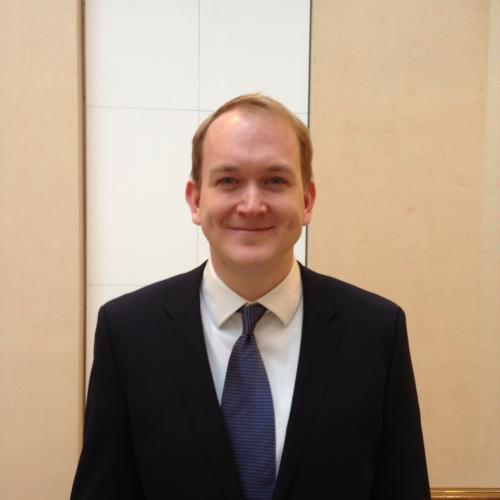In December 2013, Matt Reed handed in a 368-page dissertation to complete his physics PhD under Rob Schoelkopf’s quantum information processing lab. Two years later, the thesis had won two prestigious awards.
The Council of Graduate Schools and ProQuest awarded Reed the Distinguished Dissertation Award in the Physical Sciences, and the American Physical Society gave Reed the 2015 Richard L. Green Dissertation Award in Experimental Condensed Matter or Materials Physics. Reed received the former award in Washington, D.C. in December.
Both awards recognize Reed for his work on quantum error correction in superconducting qubit systems. Because quantum systems are inherently unstable and incredibly sensitive to environmental interference, they must have robust error-correction schemes in order to be able to execute useful algorithms.
“If error correction doesn’t work, then the entire field won’t work,” Reed said.
Quantum error correction as the third major hurdle in the field of quantum information processing. The first, Reed said, was showing that a single qubit could be put in an arbitrary state, manipulated, and measured. But since one qubit can only store one classical bit of information, this wasn’t enough to demonstrate any advantage of quantum over classical computing. The next major advance in the field was entangling two qubits together, which opened up the door to storing information in the correlations between the quits. Reed’s work advances an important third step - demonstrating feasible error-correction in systems of more than two qubits.
Author : Ike Swelitz
Reed demonstrated the first error correction method for a 3-qubit solid-state system. Three-qubit error correction had already been done in liquid-state NMR and trapped ion systems, but these are not as scalable as solid-state systems. Since Reed’s thesis, teams at IBM, Delft University of Technology, and the University of California at Santa Barbara have also demonstrated error correction in solid state systems of 3, 5, and 9 qubits, respectively.
Additionally, Reed developed some pieces of technology that have helped out other researchers in his lab, as well as other quantum information labs outside of Yale. One of these is a “Purcell filter,” which helps researchers accurately measure the state of qubits.
When a qubit is embedded in a 3-D cavity, the resonant frequencies of the cavity shift in a way related to the state of the qubit. Measuring the frequencies of the cavity allow researchers to determine the qubit’s state. However, researchers do these measurements by bombarding the cavity and qubit with microwave photons, which excite both the cavity and the qubit, causing both of them to emit photons. Photons coming from the qubit obscure the measurement of the cavity’s frequency, and thereby the qubit’s state. The Purcell filter allows researchers to better distinguish between photons coming from each of these sources, leading to better measurements of the state of the qubit.
Now, Reed has moved on from Yale works HRL Laboratories, a California-based research company, where he researches quantum information processing with silicon quantum dots. Reed said that while the big-picture aspects of quantum dots are similar to superconducting qubits - both systems are solid state and operate near absolute zero - the underlying physics is different. While superconducting qubits operate using the collective motion of trillions of electrons, quantum dots store their information in the spin states of only a handful.
Reed is excited about the future of the field. “This has the potential to be a technology on the scale of the transistor,” Reed said. “It could be a very big deal for hundreds of years.”
